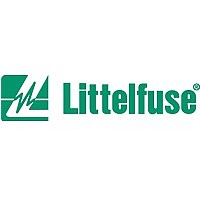AC16DGM Teccor Electronics, AC16DGM Datasheet - Page 121

AC16DGM
Manufacturer Part Number
AC16DGM
Description
Manufacturer
Teccor Electronics
Datasheet
1.AC16DGM.pdf
(223 pages)
Available stocks
Company
Part Number
Manufacturer
Quantity
Price
Company:
Part Number:
AC16DGM
Manufacturer:
NEC
Quantity:
8 000
Company:
Part Number:
AC16DGM
Manufacturer:
NEC
Quantity:
1 000
- Current page: 121 of 223
- Download datasheet (3Mb)
AN1001
Introduction
The thyristor family of semiconductors consists of several very
useful devices. The most widely used of this family are silicon
controlled rectifiers (SCRs), triacs, sidacs, and diacs. In many
applications these devices perform key functions and are real
assets in meeting environmental, speed, and reliability specifica-
tions which their electro-mechanical counterparts cannot fulfill.
This application note presents the basic fundamentals of SCR,
triac, sidac, and diac thyristors so the user understands how they
differ in characteristics and parameters from their electro-
mechanical counterparts. Also, thyristor terminology is defined.
SCR
Basic Operation
Figure AN1001.1 shows the simple block construction of an SCR.
Figure AN1001.1
The operation of a PNPN device can best be visualized as a spe-
cially coupled pair of transistors as shown in Figure AN1001.2.
Figure AN1001.2
©2002 Teccor Electronics
Thyristor Product Catalog
Gate
Block Construction
Two-transistor
Gate
Anode
Schematic
Cathode
P
Anode
Cathode
P
N
N
SCR Block Construction
Coupled Pair of Transistors as a SCR
P
P
J1
J3
J2
N
N
N
Load
Gate
Gate
Schematic Symbol
Construction Equivalent
Two-transistor Block
Fundamental Characteristics of Thyristors
Cathode
Anode
Cathode
J2
J3
N
P
N
Anode
P
N
P
J1
J2
AN1001 - 1
The connections between the two transistors trigger the occur-
rence of regenerative action when a proper gate signal is applied
to the base of the NPN transistor. Normal leakage current is so
low that the combined h
feedback amplifier is less than unity, thus keeping the circuit in
an off-state condition. A momentary positive pulse applied to the
gate biases the NPN transistor into conduction which, in turn,
biases the PNP transistor into conduction. The effective h
momentarily becomes greater than unity so that the specially
coupled transistors saturate. Once saturated, current through the
transistors is enough to keep the combined h
unity. The circuit remains “on” until it is “turned off” by reducing
the anode-to-cathode current (I
than unity and regeneration ceases. This threshold anode current
is the holding current of the SCR.
Geometric Construction
Figure AN1001.3 shows cross-sectional views of an SCR chip
and illustrations of current flow and junction biasing in both the
blocking and triggering modes.
Figure AN1001.3
Forward Bias and Current Flow
(+) I GT
Gate
Gate
P
P
Reverse Bias
Anode
Anode
N
P
N
P
(+)
(-)
Cathode
Cathode
Cross-sectional View of SCR Chip
N
N
(+)
(-)
I T
FE
of the specially coupled two-transistor
T
) so that the combined h
AN1001
Reverse Biased
Junction
Reverse Biased
Gate Junction
Forward
Blocking
Junction
http://www.teccor.com
FE
greater than
Equivalent Diode
Equivalent Diode
+1 972-580-7777
Relationship
Relationship
Cathode
Cathode
Anode
Anode
FE
(+)
(-)
(+)
(-)
FE
is less
Related parts for AC16DGM
Image
Part Number
Description
Manufacturer
Datasheet
Request
R

Part Number:
Description:
Cross Reference Data to Teccor Part Numbers (See datasheet appendix)
Manufacturer:
Teccor Electronics
Datasheet:

Part Number:
Description:
Cross Reference Data to Teccor Part Numbers (See datasheet appendix)
Manufacturer:
Teccor Electronics
Datasheet:

Part Number:
Description:
Cross Reference Data to Teccor Part Numbers (See datasheet appendix)
Manufacturer:
Teccor Electronics
Datasheet:

Part Number:
Description:
Manufacturer:
Teccor Electronics
Datasheet:

Part Number:
Description:
solid state crowbar devices
Manufacturer:
Teccor Electronics
Datasheet:

Part Number:
Description:
Sensitive SCRs (0.8 A to 10 A) S6S1Sensitive SCRs
Manufacturer:
Teccor Electronics
Datasheet:











